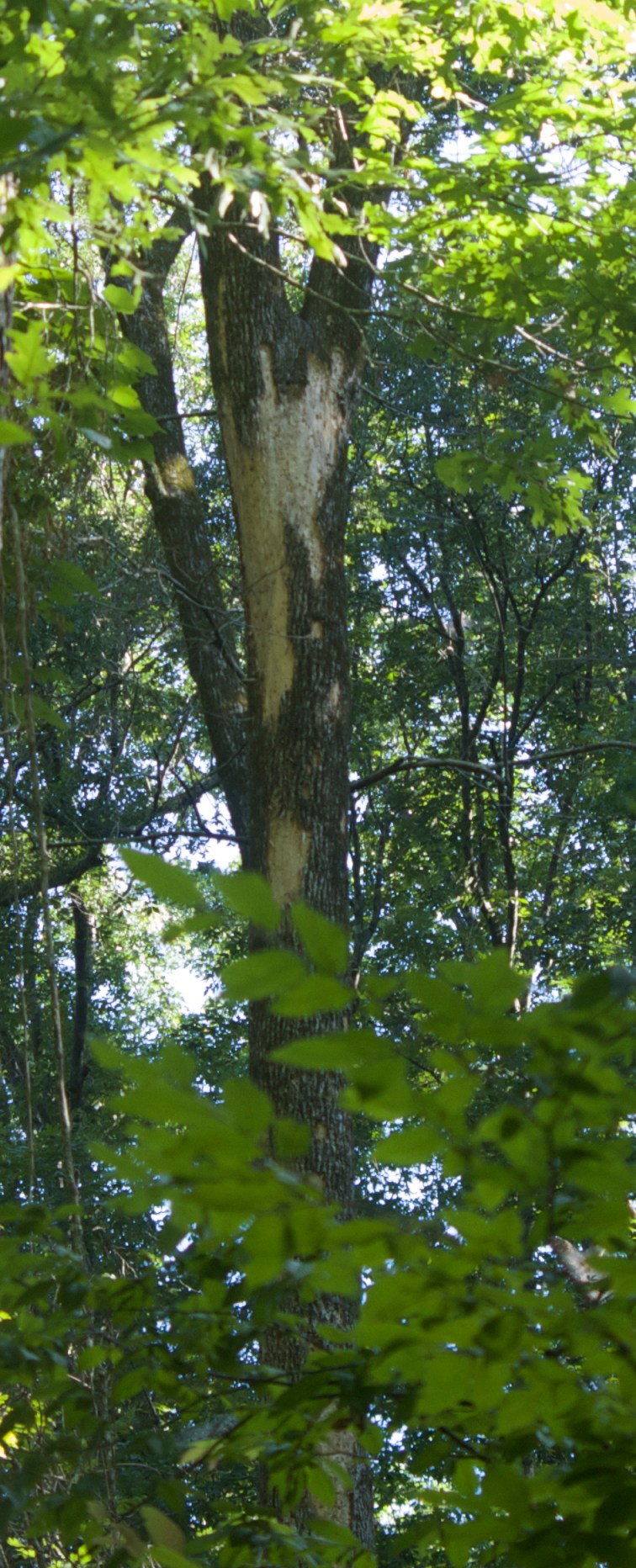In searching Cornell University’s online digital archives, I ran across some IBWO related photographs from the 1935 Allen/Kellogg/Tanner expedition in the Albert Rich Brand collection. Many of these pictures are familiar and have been widely published. Others are likely to be new, even to the most obsessive researchers, since Brand was a relatively less celebrated member of the expedition. One of the more interesting images shows a nest cavity near the top of a very long dead pin oak. This appears to be one of the two nest trees found by Allen and Kellogg and listed and discussed by Tanner, pp. 67-70. The typewritten caption on the photograph reads “The third Ivorybill’s nest. . .”, although Tanner only mentions two. The quality of the photograph is poor, but it is interesting because the stub is clearly long dead.
For my purposes, the most interesting photograph, titled Rock Elm Observation Blind shows the better known nest tree (a maple) from a different perspective than the published photos and includes more of the trunk than the others I’ve seen. I downloaded the image, and enlarged it as best I could. Readers can do the same. On close examination, a bill is visible protruding from nest cavity, making this a modest addition to the body of ivorybill photographs. What I find most significant is the appearance of the scaling on the bole. While the condition of the underlying wood seems to be considerably worse than what we are deeming to be grade A scaling, the similarity in appearance is dramatic, especially on the edges. The resemblance between this work and the scaling found in July in the northern sector is particularly striking.
Edited to add: All the digitized Brand collection images are here. They’re worth a look.
In addition, I’ve found a hand tinted version of “Rock Elm Observation Blind” in the Arthur A. Allen collection, under the title “Ivory-billed Woodpecker – Blind at Nest“. Although the colors are slightly washed out and smeared, the bird in the cavity is a little easier to see, and the similarities between the scaling on that tree and the scaling we’re finding are a little more evident, at least to my eyes.
Wishing everyone the best for the holidays and the coming year!
